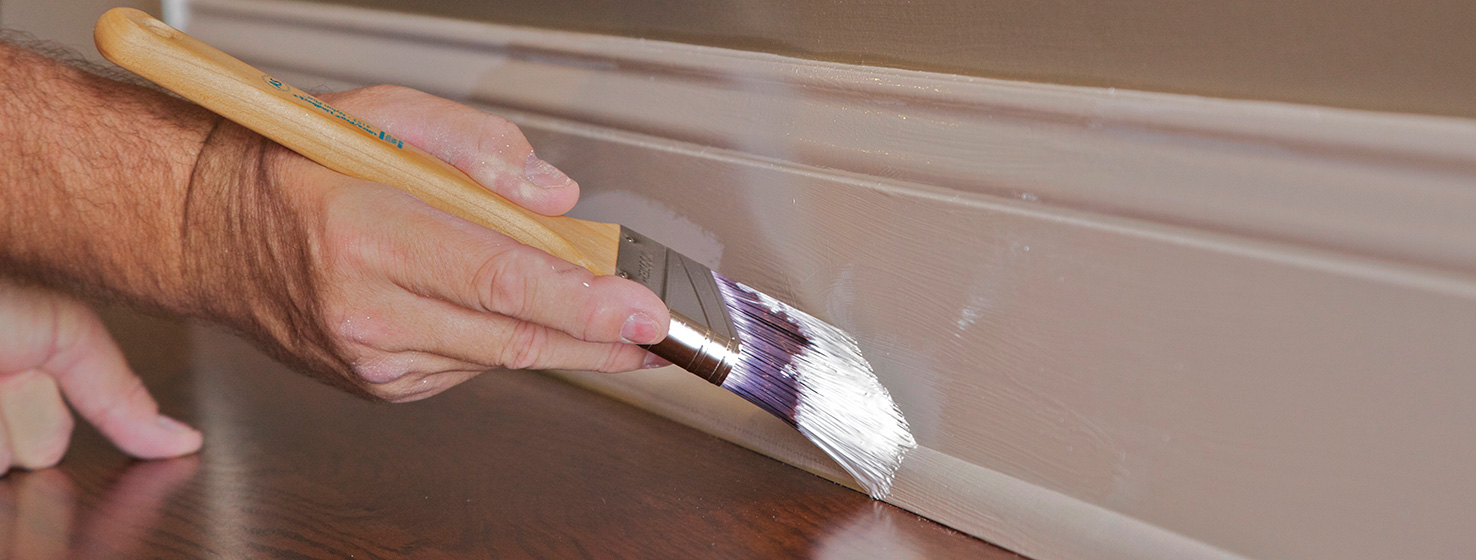When faced with tough coating challenges, pros get answers from our Ask Your ProPartner™ columnist.
Here are answers to six questions that professional painting contractors asked us about interior painting.
I have a problem with paint coverage on the first coat when rolling latex on interior drywall surfaces. When the paint dries, small pinhead size dots of the older color come through. What causes this?
Could be a combination of a couple things. Overapplying a coating (too thick) can trap solvents in the film (in this case, water is the solvent). When a coating is applied at the recommended film thickness, the evaporating solvents and trapped air escape and the film flows together to create a smooth finish.
If the coating is applied above the recommended film thickness, or if environmental conditions are less than ideal, the coating can lose some of its ability to flow out to an even finish, leaving small bubbles in the film. Using a thick nap roller cover can contribute to this phenomenon by forcing excessive air into the paint film. Preparation – or lack of – is a concern here as well. If contaminates are not removed, they could contribute to this issue.
What is the average lifetime of an interior paint job?
The answer to this is "it depends." Environmental conditions play a big role on the life of a coating. Is the coating being subjected to moisture, grease, smoke or other conditions that can break it down? Where is the coating being applied? For example, will it be used in high traffic or high moisture areas or bedrooms and rooms with little use?
Aesthetics are also a consideration. In my house, I have repainted not because the paint is no longer good, but because I wanted a color change. I think the best thing to remember is "you get what you pay for." If it sounds too good to be true, then it probably is. Inexpensive paint does not last as long as higher quality paints. The more washable the product, the longer it should last.
What’s the difference between washability and scrubbability?
Scrubbability is a way to quantify a coating’s ability to resist repeated erosion with a stiff brush. It does not quantify the condition of the paint through the test. Many high scrub paints can be burnished and down glossed but still pass the test.
Washability is the ability of a paint film to release stains or repel stains. The method is non-abrasive and does not cause an erosion of the film. It is the ability of a paint to resist the stain and not let it disrupt the paint film.
A scrubbable paint may not be stain resistant and could allow stains to penetrate. A washable paint doesn’t let the stains bond to the coating making them easy to wash away. Washable paints do not require high scrub numbers. They work by preventing stains from attacking the paint. Not all scrubbable paints are washable. Not all washable paints are exceptionally resistant to erosion. It’s the balance of these two properties that determines a quality coating.
How do you know that a wall was previously painted using oil-based paint? Is there a way to tell if the paint that has been applied to a wall is oil, semi-gloss or flat? Most of them look the same after years of use.
Pour a small amount of alcohol on a rag and rub the surface. If the alcohol just cleans the surface, that indicates it could be an alkyd coating. If the alcohol gums up the surface rather quickly or removes the paint film immediately, that possibly indicates a latex coating.
What type of paint would you recommend for painting over brick on an interior?
Choosing a quality primer and finish are essential for a successful brick-painting outcome. A masonry conditioner (such as Loxon Conditioner) or an alkali-resistant primer (such as Loxon Concrete & Masonry Primer) should be applied prior to painting interior brick. For interior paint selections, look to SuperPaint Interior Acrylic Latex or Emerald Interior Acrylic Latex Paint.
When staining interior soft woods, how can I get a uniform color and appearance?
Applying a coat of Minwax PreStain Wood Conditioner before staining is the most popular method of providing a surface that will allow uniform absorption of color into soft woods such as pine. Minwax PreStain Wood Conditioner doesn’t change the color of the wood and helps by unifying the porosity of the wood prior to applying your stain. Once stained, you may topcoat with Minwax Polyurethane Varnish or Minwax Performance Series FastDry Varnish.










